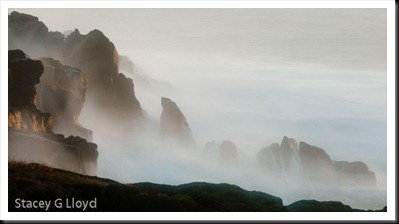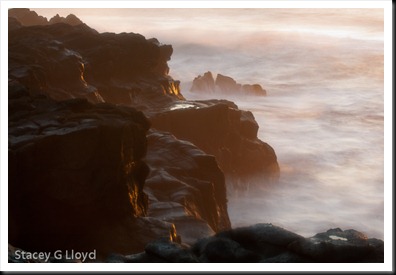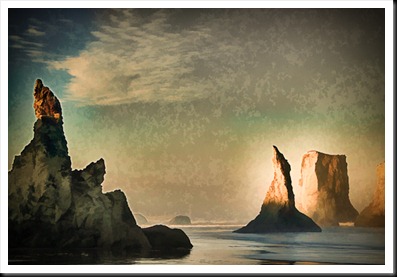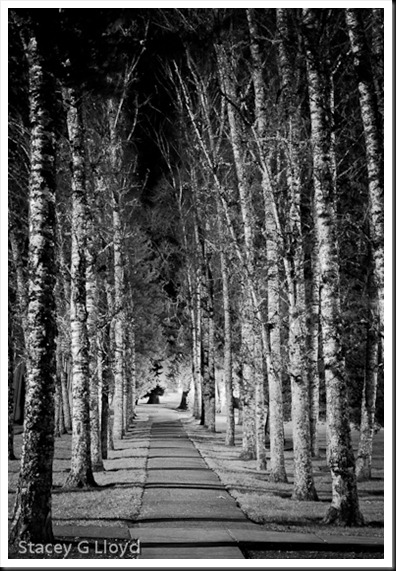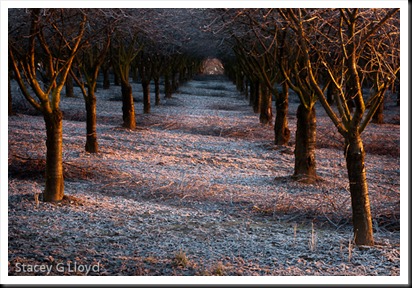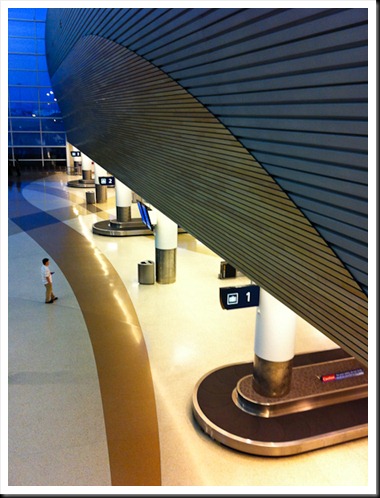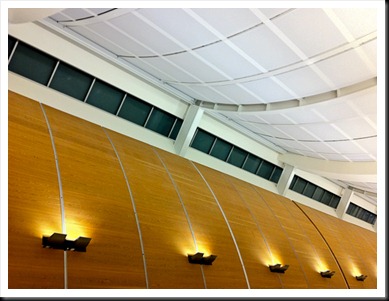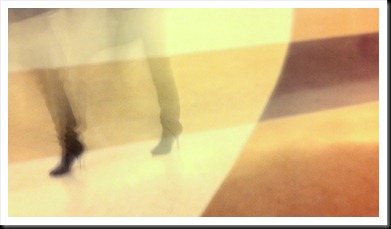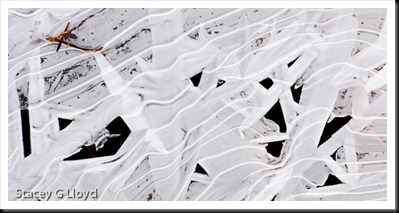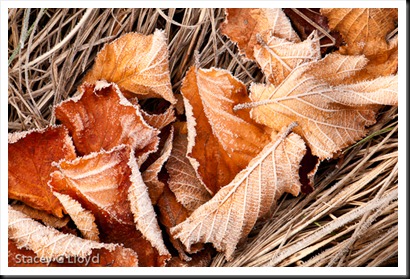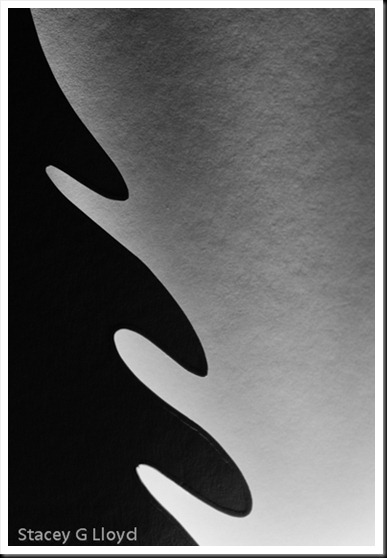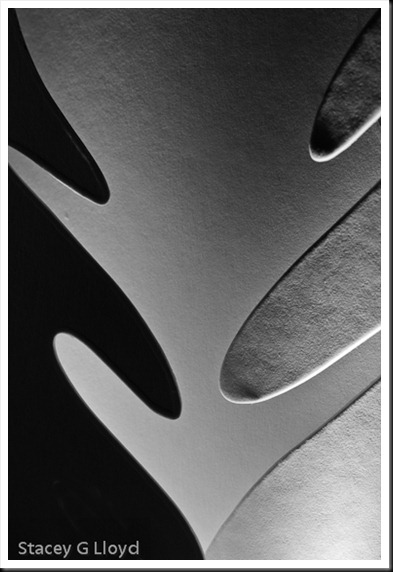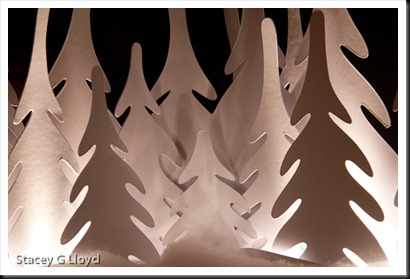I was reading an image description on Darren White’s Flickr page the other day and he commented on how most of his Oregon coast images were in black and white. He noted that this was due to the fact that so many times the skies were cloudy and gray. This is often the case. In fact the day after I shot the images in my previous blog entry the skies were gray. Given that, I didn’t shoot as many images and I knew I would be processing them in B&W. What am I trying to say? Remember to adapt when the weather isn’t what you hoped for. Maybe you need to be seeing in B&W. Great images are still there to be captured.
Blog image: This is another long exposure image – 8 sec at f22 using a variable ND filter. In post processing, several things were done. A row of houses was removed from the far ridge using cloning (something I expected to do), the sky was darkened, foreground rocks were lightened and structure brought out in the water. Silver Efx Pro was used to convert and process the B&W image. I started with the high structure preset and added a red filter. I used a control point to bring out the far sea stack by adding contrast and darkening it. One thing I love in Silver Efx Pro is the “zone” bar that lets me see what portions of the image are in which tonal zone.


